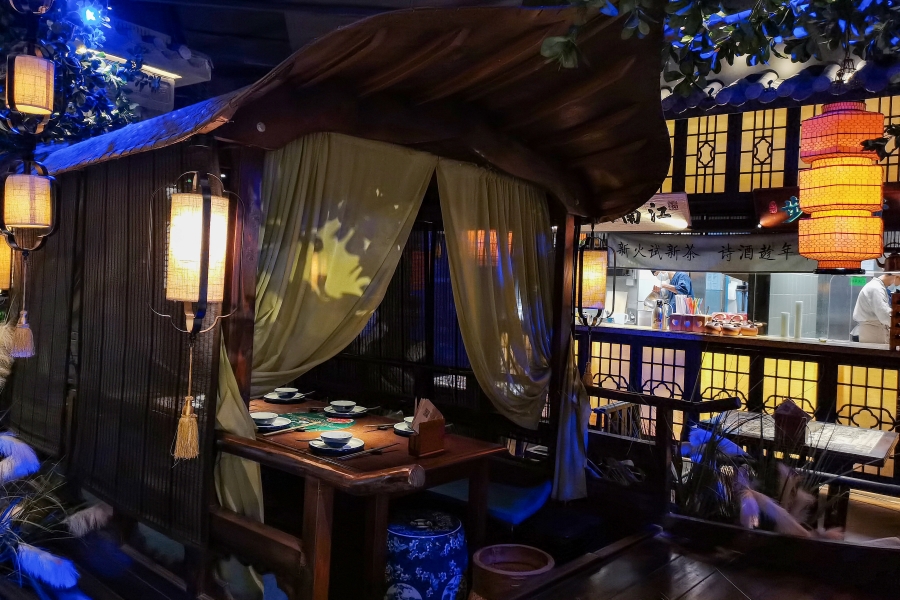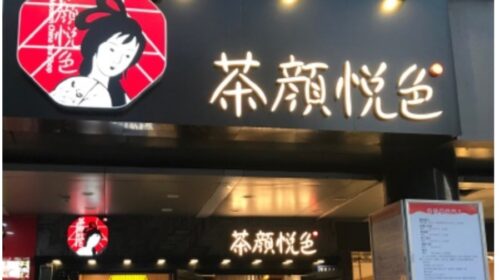Green Tea Group Looks for Room at the Listing Table With Hong Kong IPO

The restaurant operator aims to raise $150 million, but could face headwinds from recent weak sentiment towards the sector
Key Takeaways:
- Popular restaurant operator Green Tea Group has been approved for a Hong Kong listing
- The company plans to raise $150 million, which it will spend to open 75 to 100 new restaurants each year from 2022 to 2024
By Tina Yip
More than 10 years ago, legions of freshly minted working young men would line up for hours for a table at the Green Tea restaurant near the picturesque West Lake in Hangzhou to impress their girlfriends. The restaurant was a hot spot for such youth, attracted by its elegant and quaint decor mixed with traditional Chinese elements. It offered a wide variety of food at prices well within the budget of low- to middle-income lovebirds looking for a romantic date.
Now this popular restaurant’s owner, Green Tea Group Ltd., has its own date with investors as it heads towards an IPO. On March 7, it passed a listing hearing at the Hong Kong Stock Exchange to initiate the IPO process, and is very likely to become the first restaurant business to float in 2022 – no puns intended. Market sources said the company started its road show last week and will hold its IPO at the end of March or beginning of April with a goal of raising $150 million.
The chain’s founder, the husband-wife team of Wang Qinsong and Lu Changmei, started out running the Green Tea youth hostel near West Lake in 2004, targeting droves of backpackers from across China looking for affordable lodging and dining close to one of China’s most famous scenic spots. Heeding customer suggestions, the couple started to experiment with innovative cuisines and came up with trademark dishes like green tea roasted chicken, grilled shrimp and “bread temptation” among many dishes.
As word got out, the business slowly became a tourist magnet. They finally decided to rebrand the business and reposition it as a restaurant, with the first Green Tea restaurant opened in 2008 near West Lake.
From those humble beginnings, the chain has expanded rapidly in recent years. According to its prospectus, the number of outlets increased from 107 in 2018 to 236 by last October across 18 provinces, four municipalities and three autonomous regions in China. Despite the pandemic the company added another 59 restaurants last year, and plans to open 75 to 100 per year from 2022 to 2024.
What it needs most right now to keep up its growth is funding, which brings us back to the IPO. The company first submitted an IPO application in March last year, but errors were uncovered by an investor website and the application ultimately expired at the end of last September without a successful listing. The company took a second stab in early October with a new application that this time looks set for success.
Lower-spending customers
The company’s revenue soared from around 1.31 billion yuan ($205 million) in 2018 to 1.74 billion yuan the following year, representing a year-on-year increase of 32.4%, fueled by its fast expansion. Despite the pandemic, its revenue only dipped by 9.6% in 2020 to 1.57 billion yuan from 2019. In the first three quarters of 2021, revenue rebounded year-on-year by 58.2% to around 1.69 billion yuan, partly due to the rapid containment of the pandemic in China. That strong performance points to the company’s big growth potential.
But the revenue growth has been accompanied by a decline in average spending per diner at the restaurants, dipping 2.6% from 61.8 yuan at the end of September 2020 to 60.2 yuan at the end of this past September. That marked the first such decline in recent years, though the company was quick to explain the drop as the result of pandemic-related factors such as growing demand for takeout, lower discounts compared with 2021 and the cost of seasonal promotions in Eastern China.
On a more positive note, the company’s average table turnover rate increased from 2.43 times per day at the end of September 2020 to 3.32 times last September, bringing it back to pre-pandemic levels after two consecutive years of decline. Average same-store sales also rose sharply from 1.03 million yuan to 1.45 million yuan for the same nine-month period, an increase of 40.6%.
The restaurant business is competitive everywhere, but especially in China where barriers to entry are low and everyone fancies themselves a culinary expert. According to China Insights Consultancy, restaurants specializing in Chinese cuisines generated total revenue of around 2.2 trillion yuan in 2020 nationwide, including 351.3 billion yuan from casual dining. But the market is highly fragmented, with the top five operators accounting for just 3.8% of total revenue. Green Tea Group is fourth in the industry, accounting for 0.5% of the market. The only way to maintain and improve its position is by opening more restaurants.
Low investor appetite
Timing is everything when it comes to getting a strong valuation. In that regard the past year hasn’t been kind to restaurants, many of which have been shunned by investors after briefly soaring as a flavor of the day. Through last Thursday, faded hotpot superstar Haidilao (6862.HK) was trading at HK$14.28, an 83% nosedive from a high of HK$85 last year. Even at that level its estimated price-to-earnings (P/E) ratio was still quite high at 39 times. Jiumaojiu (9922.HK) was down by nearly 60% from its high last year of HK$38 to just HK$14.94 last Thursday, with an estimated P/E ratio of 41 times. Xiabuxiabu (0520.HK) suffered the worst among the three, tumbling 84% from last year’s peak of HK$23.60 to HK$4.08 and trading at a current P/E ratio of around 15 times.
In terms of profit, Green Tea Group is squarely in the green. Its profit totaled 94.85 million yuan in the first three quarters of last year, averaging 31.62 million yuan every quarter. If that profit level holds, its full-year profit would come in at 126 million yuan. Thus a P/E ratio of around 32 times, the average for the other three chains, would give Green Tea Group an IPO valuation of around 4 billion yuan, 10% higher than the HK$4.4 billion valuation of Xiabuxiabu, which operates more than 1,000 restaurants.
Many Chinese restaurants are still reeling from the aftermath of the pandemic, which has made them realize the importance of having enough cash to weather the troubled times. As they run short on such dough, many, such as Country Style Cooking Restaurant Chain, QiXinTian and Old Uncle Catering, are champing at the bit to get listed in Hong Kong or on one of mainland China’s A-share markets as the fastest way to replenish their coffers and gear up for more competition.
Despite its successful approval and potential to become this year’s first new restaurant stock on the Hong Kong Exchange, a wide range of other options for investors, combined with weak sentiment towards the broader group, means Green Tea may find it more difficult to find the same favor with investors as it has with diners.
To subscribe to Bamboo Works free weekly newsletter, click here





